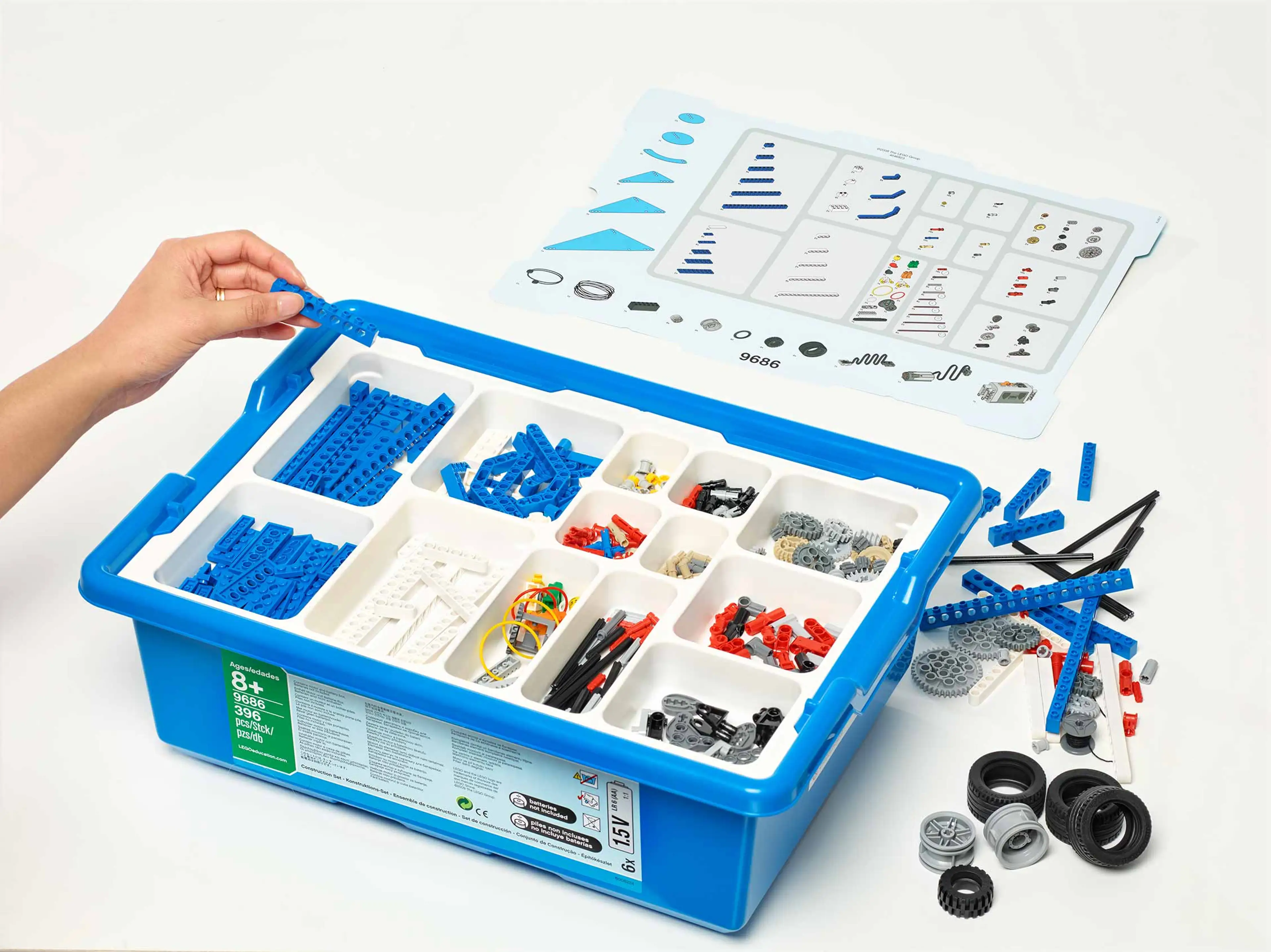When third generation LEGO® owner Kjeld Kirk Kristiansen becomes CEO of the LEGO Group in 1979, he brings a lot of new ideas to the table. One of them is the desire to focus on the LEGO brick being more than a construction toy – to him it is a play and learning material.
Kjeld Kirk brings this focus to a completely new level in 1980 when he establishes an educational division named LEGO Institutional Department. Through this new division, he introduces consistent focus on the importance of learning through play and a willingness to explore this even further. It is once and for all established that the LEGO System in Play is also a LEGO System for Learning. The department handles all relations with pre-school, elementary and middle school and provides LEGO products developed especially for these institutions.
Early Pre-School products
When LEGO Institutional products were launched in the 1980s it was not a completely new venture for the LEGO Group. As early as 1949, the first bricks aimed at pre-schools were introduced and during the 1960s several sets aimed at pre-schools and schools were launched.
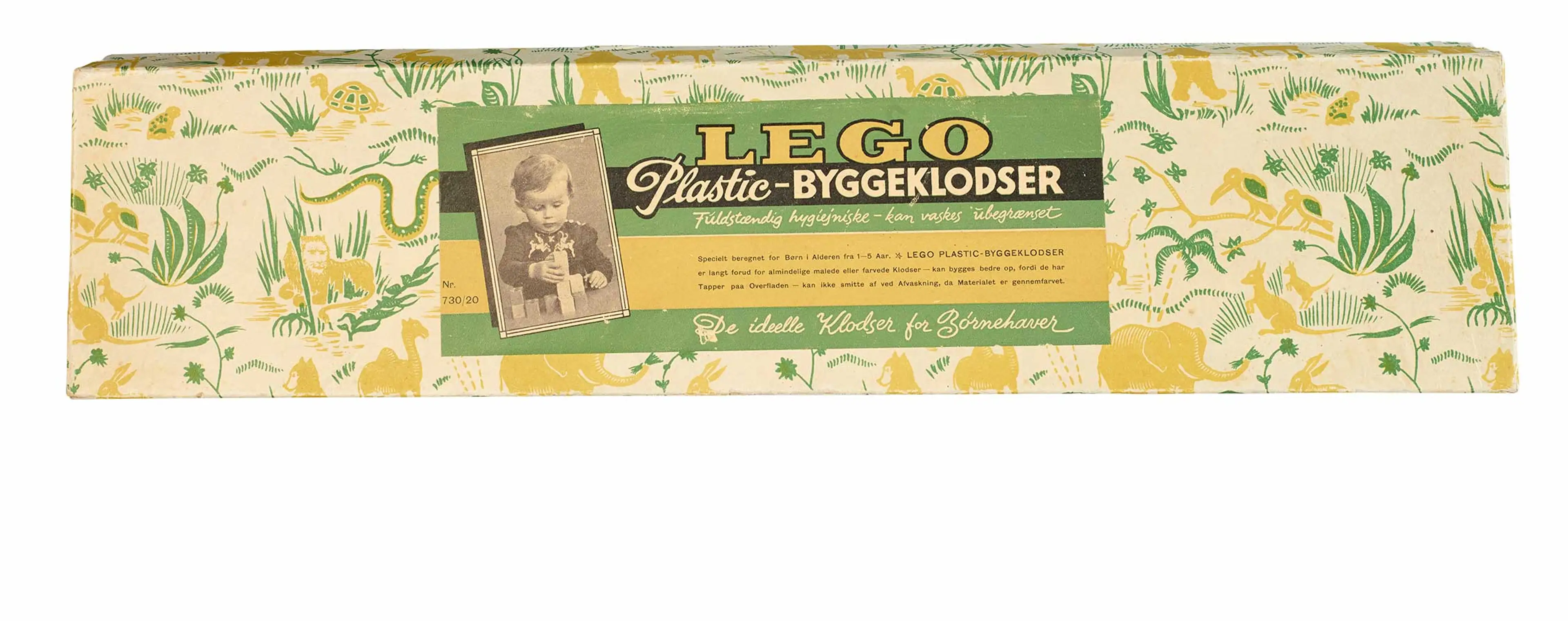
A box of LEGO® Plastic building bricks intended for pre-schools. The child on the box is a very young Kjeld Kirk Kristiansen
Delivering playful learning experiences
In 1989, the LEGO Institutional Department changes its name to LEGO DACTA and later in 2002 to LEGO Educational Division before settling on the name used today, LEGO Education, in 2006.
Standing on the shoulders of the core values of the LEGO Group, LEGO Education has delivered playful learning experiences for well over 30 years with the mission to make learning fun and impactful and create active, collaborative and lifelong learners. Through time LEGO Education has offered a broad range of materials for pre-schools (since 1980), elementary and middle schools (since 1982). The materials consist of Teacher’s Manuals, Student Manual’s and psychical products based on LEGO elements that fits with curriculum requirements.
Within the pre-school area, LEGO Education has used play to open a world of early math, science and language skills for young children. Using Hands-on activities with LEGO DUPLO® bricks, products like Mosaic Puzzles, World People, Build Me “Emotions” and Coding Express exemplify the focus on imagination, collaboration, self-expression, relationships, roleplay, community exploration, early math and language skills as well as early coding.
Since 1982, when LEGO Technic I is introduced as the first product for schools, the focus within the school areas has been concepts like math, science and technology, and coding/robotics. Over the years this focus has introduced various products including the first computer-controlled products: LEGO Technic Control I and II introduced in the mid-1980s as well as Early Simple Machines designed to help young students understand basic real-world science concepts and Simple and Powered Machines developed for older children to model physical behaviors.
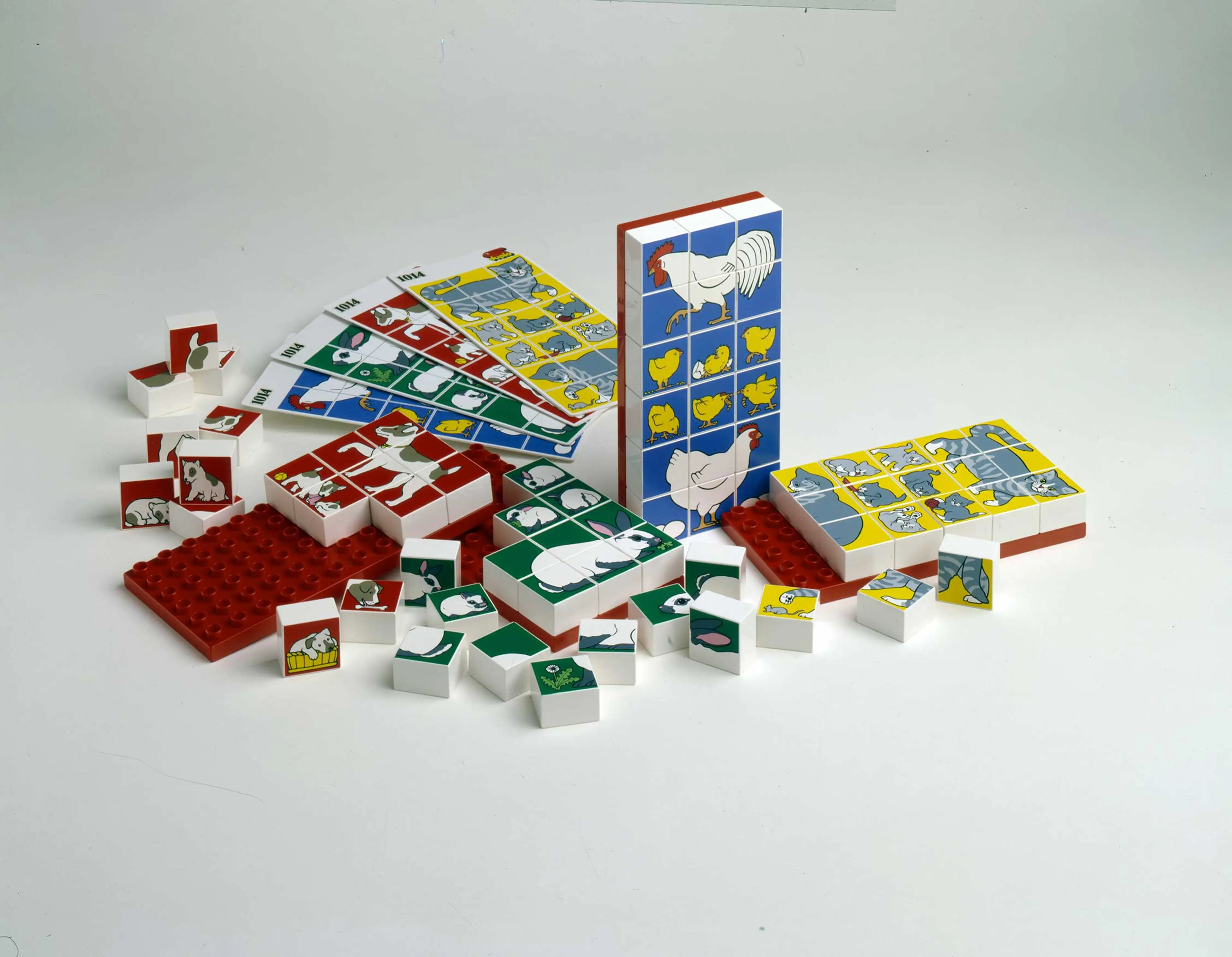
LEGO® DUPLO® Mosaic Puzzles, launched in the mid-1980s was a part of the LEGO Education product portfolio for pre-schools
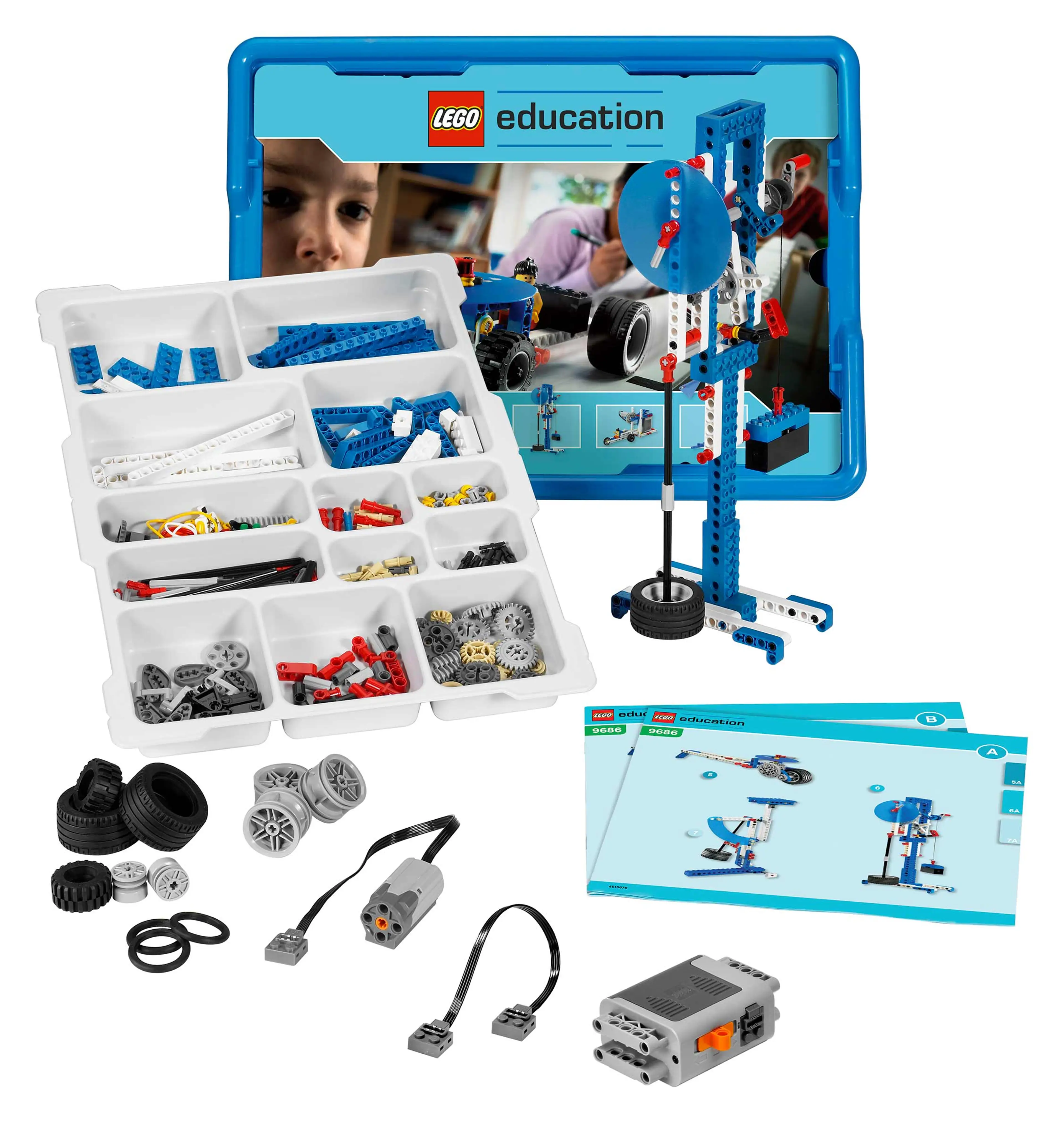
Simple and Powered Machines kit intended for middle-school children
Creating experiences that encourage children to learn through physical and digital creation, LEGO Education works on igniting student engagement. At the core of this approach are the 4 C's:
Connect - The task is introduced, allowing students to ask clarifying questions and build on their own knowledge.
Construct - Every task includes a building activity to promote experimentation and exploration and construct artefacts that can be recalled later.
Contemplate - Students consider what they have learned and share insights with each other.
Continue - Every task ends with a new task that builds on what they have just learned, keeping students motivated and curious.
Through this framework students are free to experiment and explore while gaining new knowledge and they are encouraged to collaborate as they work through open-ended tasks.
Partnering with MIT
In 1984, LEGO owner Kjeld Kirk Kristiansen watches a television show on Danish TV with professor Seymour Papert from MIT (Massachusetts Institute of Technology), demonstrating his programming language, LOGO, for children. His views on children and how they learn through play, as well as the modular structure of LOGO appeals to Kjeld Kirk, as he sees many similarities in the LEGO System in Play. As a consequence, Kjeld Kirk ask for a meeting to be set up between the two parties, eventually resulting in the collaboration still in effect today.
From the very first time I heard Seymour Papert speak, I was absolutely fascinated by him and his views on how children learn through experimentation. It was obvious to both of us that we should work together. We shared the exact same values and views on learning through play and he has had a ground-breaking impact on our ideas and approach - Kjeld Kirk Kristiansen, 2016
In 1987, the LEGO Group launch a new LEGO product, LEGO Technic Control 0, a product that can be programmed with a special version of LOGO developed by Seymour Papert. Although this product is the first tangible result of the collaboration between Seymour Papert, his team at MIT Media Lab and the LEGO Group, it is certainly not the only one. The most notable product conceived by the collaboration is LEGO MINDSTORMSTM launched in 1998. Since 1999, MINDSTORMS products have also been a part of the LEGO Education product portfolio giving students a hands-on STEM (Science, Technology, Engineering and Math) solution.
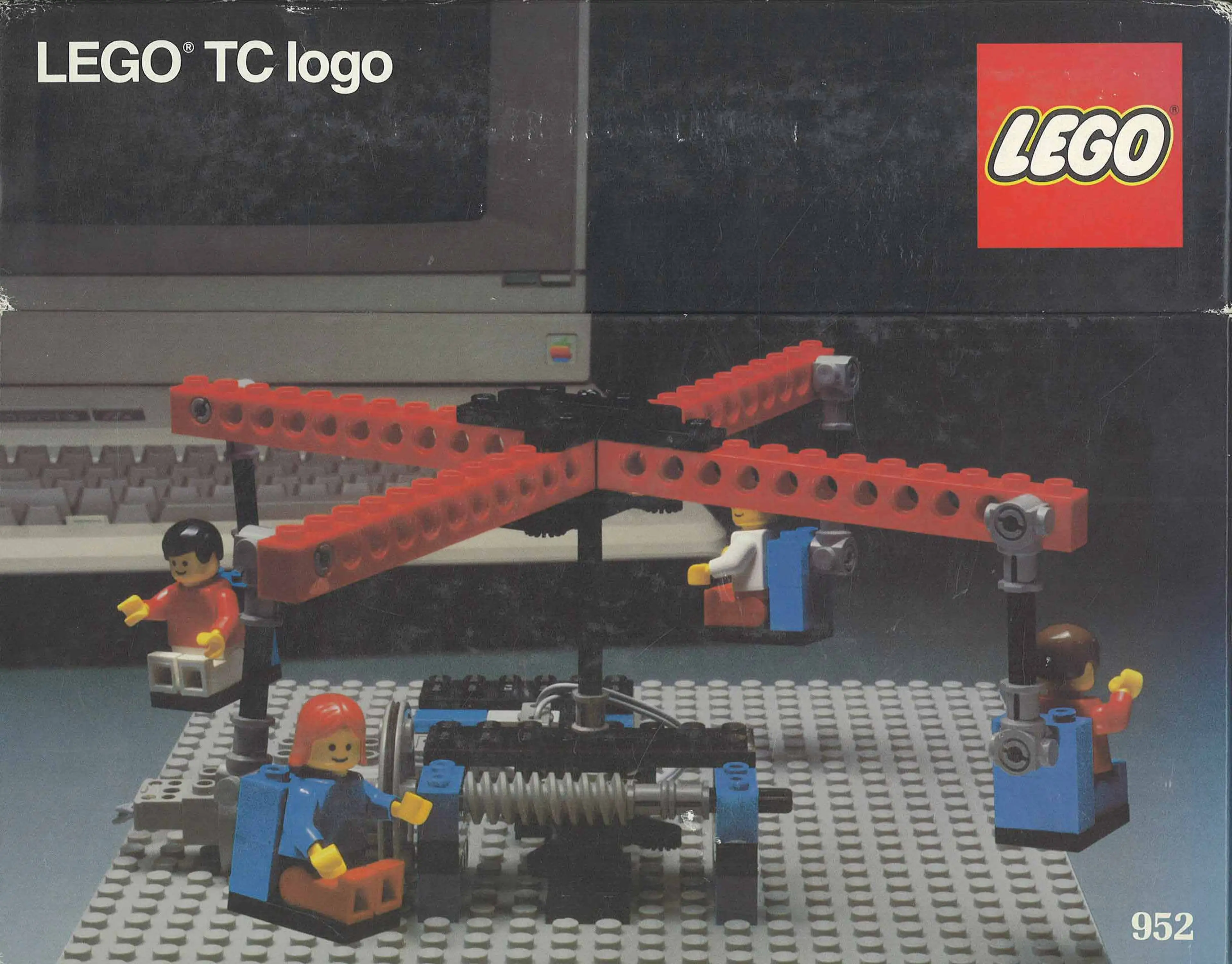
Literature and software pack for LEGO Technic Control 0, containing student and teacher guides among other things
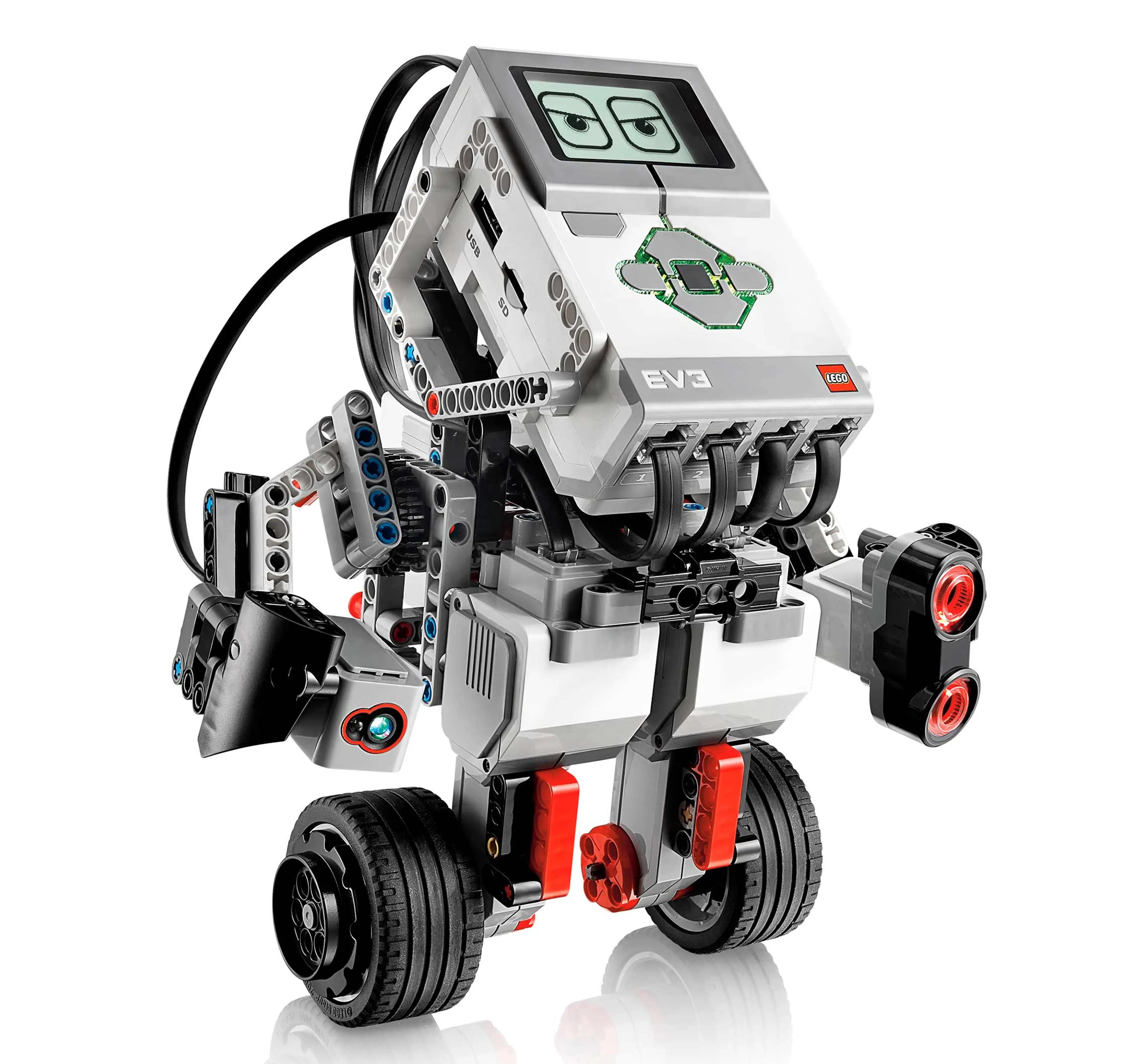
LEGO Education EV3 model
FIRST® LEGO® League
LEGO MINDSTORMS products are also a key part of another LEGO Education partnership with FIRST (For Inspiration and Recognition of Science and Technology) - a non-profit organization founded by American inventor Dean Kamen. Every year since 1998, thousands of children compete in FIRST® LEGO League competitions around the world. Using LEGO MINDSTORMS technology, teams of students aged 9-16 design, build, program and test robots to solve challenges facing today´s scientists such as food safety and recycling. A similar program called FIRST LEGO League Jr. has excited children aged 6-10 about STEM since 2004.
As of 2017, more than 290.000 children from 88 countries around the world participate in the FIRST® LEGO League program and the FIRST® LEGO League Jr. attracts 40.000 children from 41 countries.
NASA and ESA
In 2010, NASA (National Aeronautics and Space Administration) and the LEGO Group, with LEGO Education playing a crucial role, signs a Space Act Agreement under which astronauts will build LEGO Education and LEGO City products in space to spark children´s interest in STEM. However, this is not the first collaboration between the two. As far back as the start of the new millennium, the non-profit organization Planetary Society enables collaboration between NASA and the LEGO Group, which result in LEGO products being part of several NASA missions, for example the mission that sent the two Rovers Spirit and Opportunity to Mars in 2003.
In June 2015, ESA (the European Space Agency), House of Natural Sciences and LEGO Education hosted a ´Build a Space Story´ contest. The winners of the competition were announced by Danish Astronaut Andreas Mogensen directly from the International Space Station.
Other partnerships
LEGO Education also collaborates with other reputed companies, universities and organizations such as National InstrumentsTM, Tufts University and Fraunhofer.
National InstrumentsTM has created the LabVIEW software currently used in LEGO MINDSTORMS products. LEGO Education and Tufts University, among other things, collaborate on LEGO Engineering – an online resource for inspiring and supporting teachers to bring LEGO Education based engineering to students. Fraunhofer Institute for Intelligent Analysis and Information Systems (IAIS) and LEGO Education have collaborated for several years. Fraunhofer, for example, run courses and write textbooks about LEGO MINDSTORMS products.

